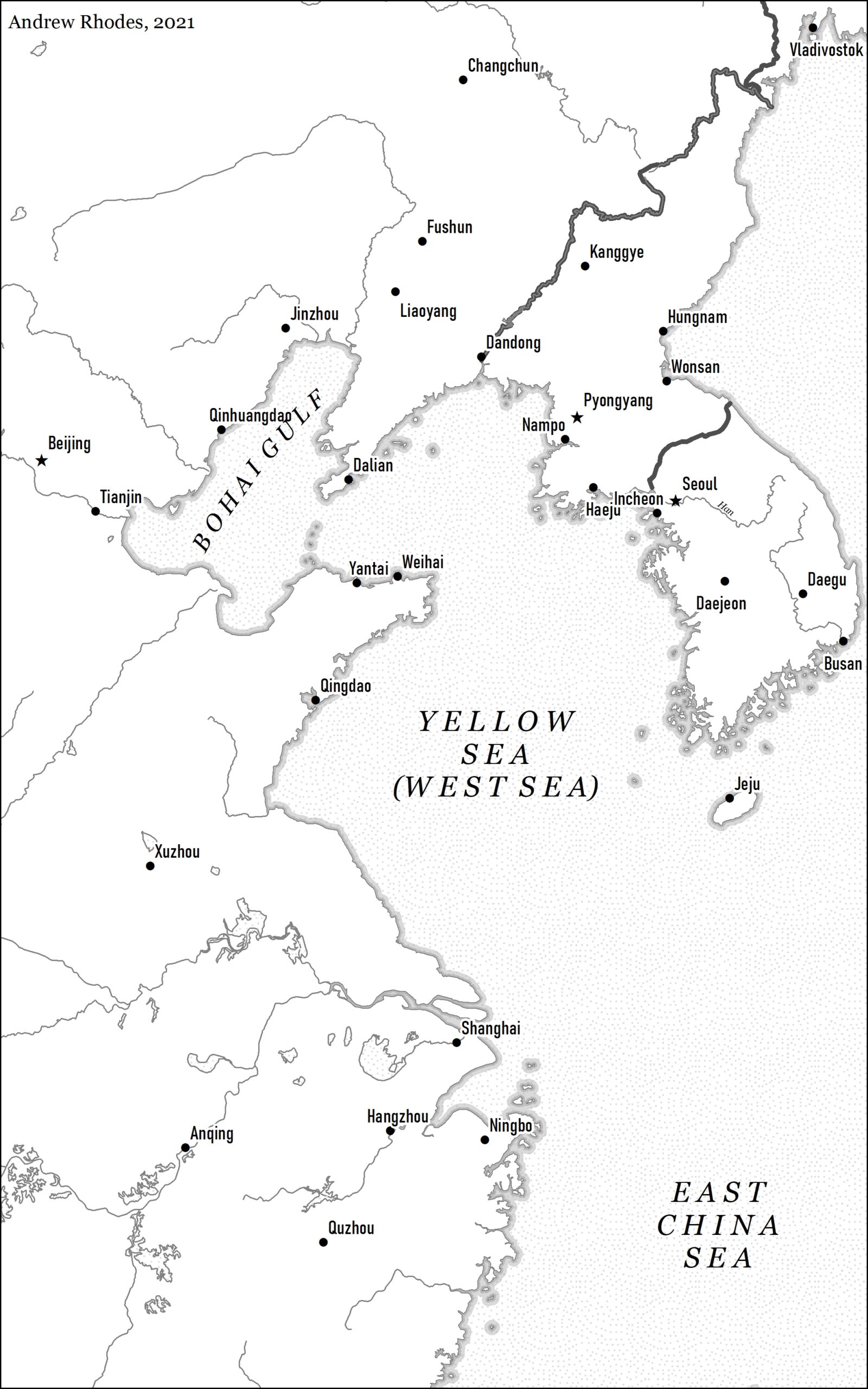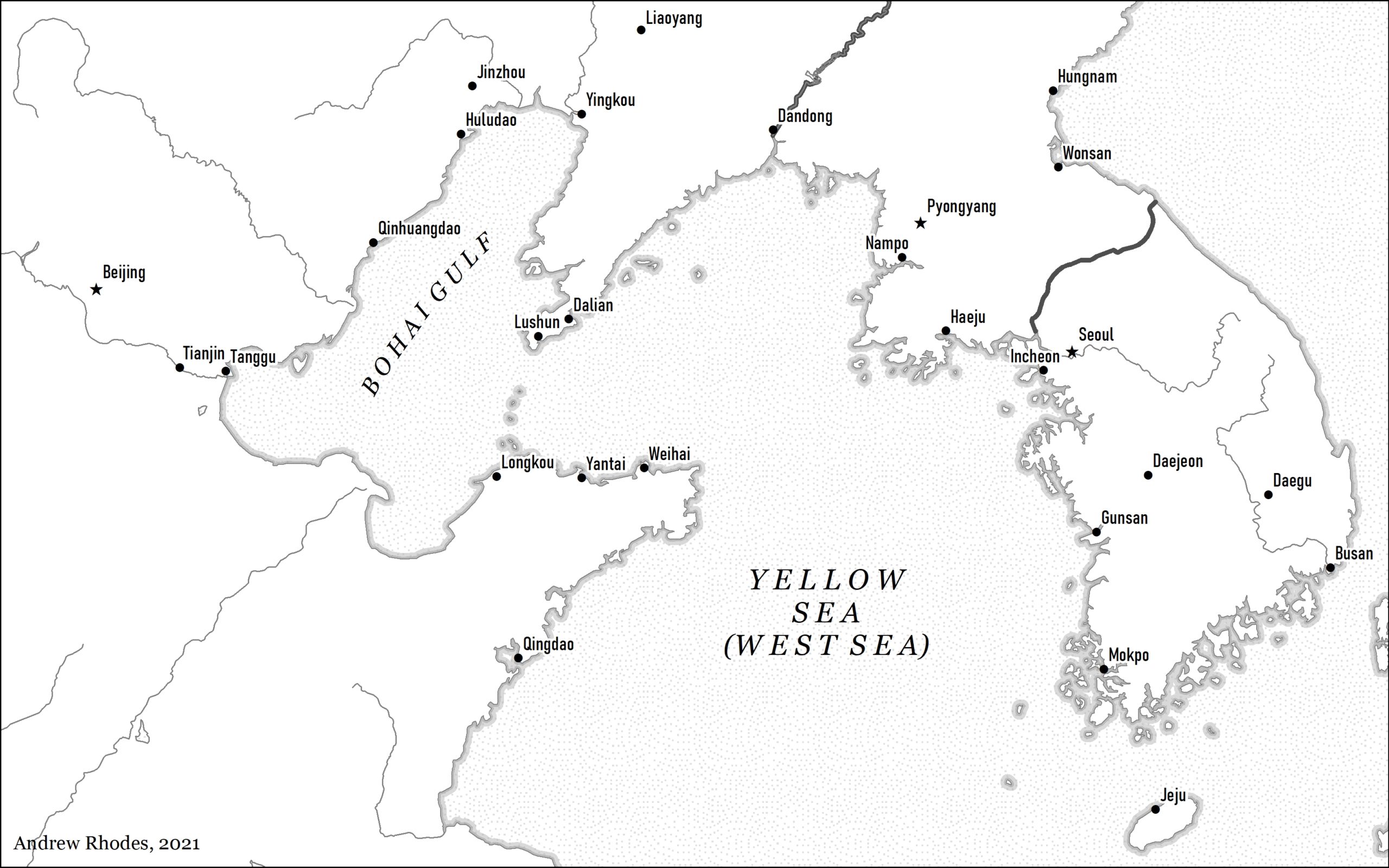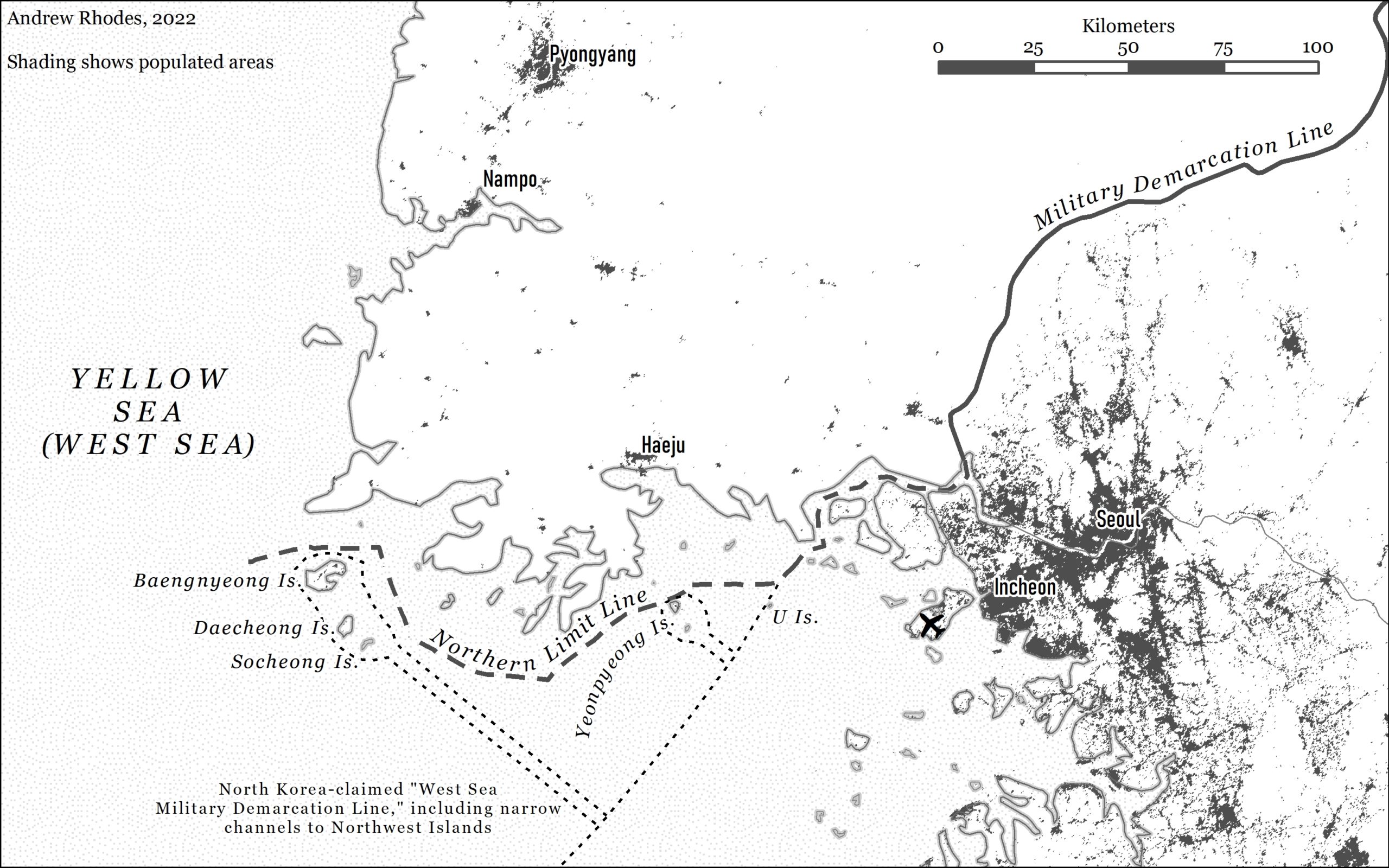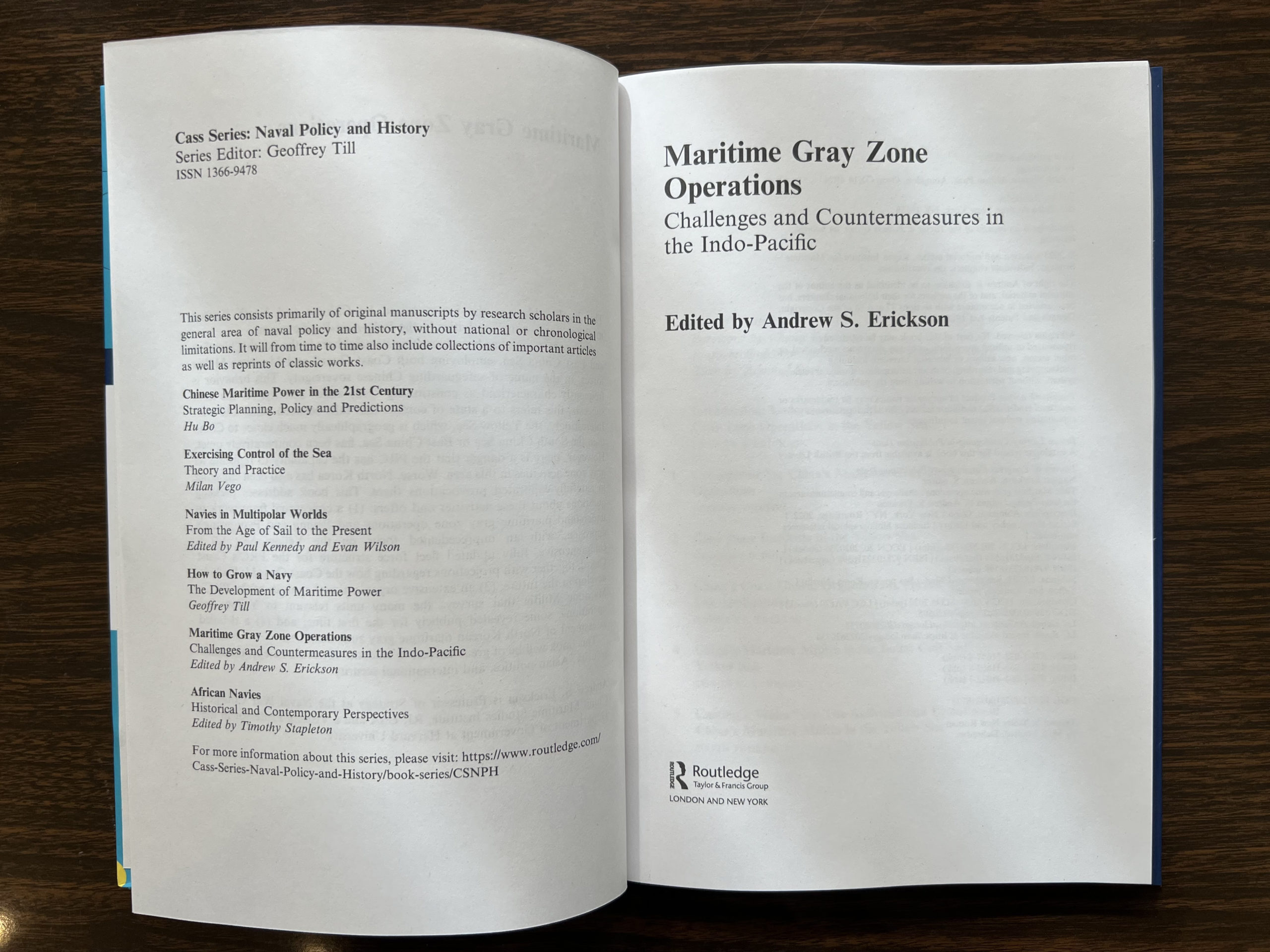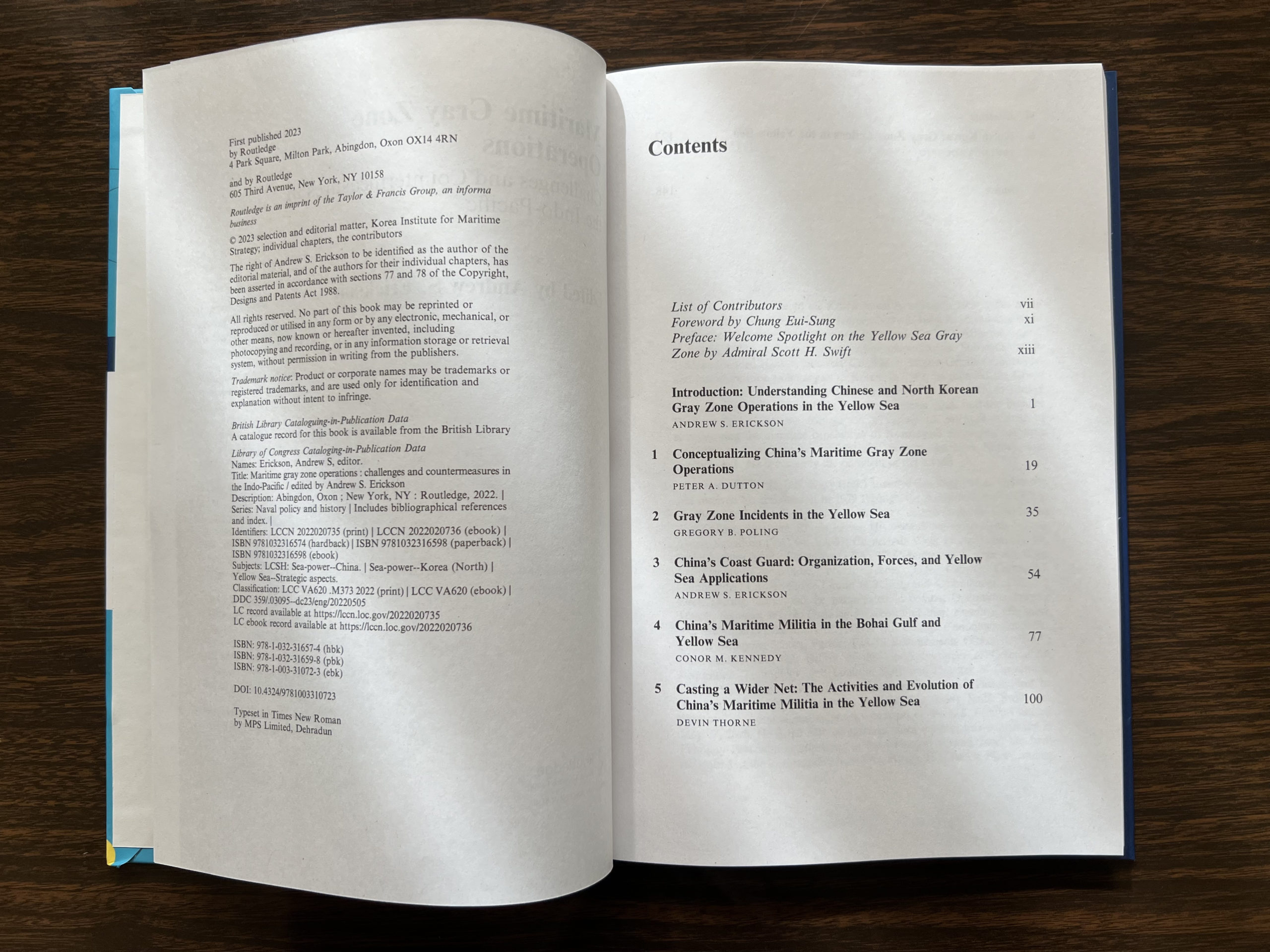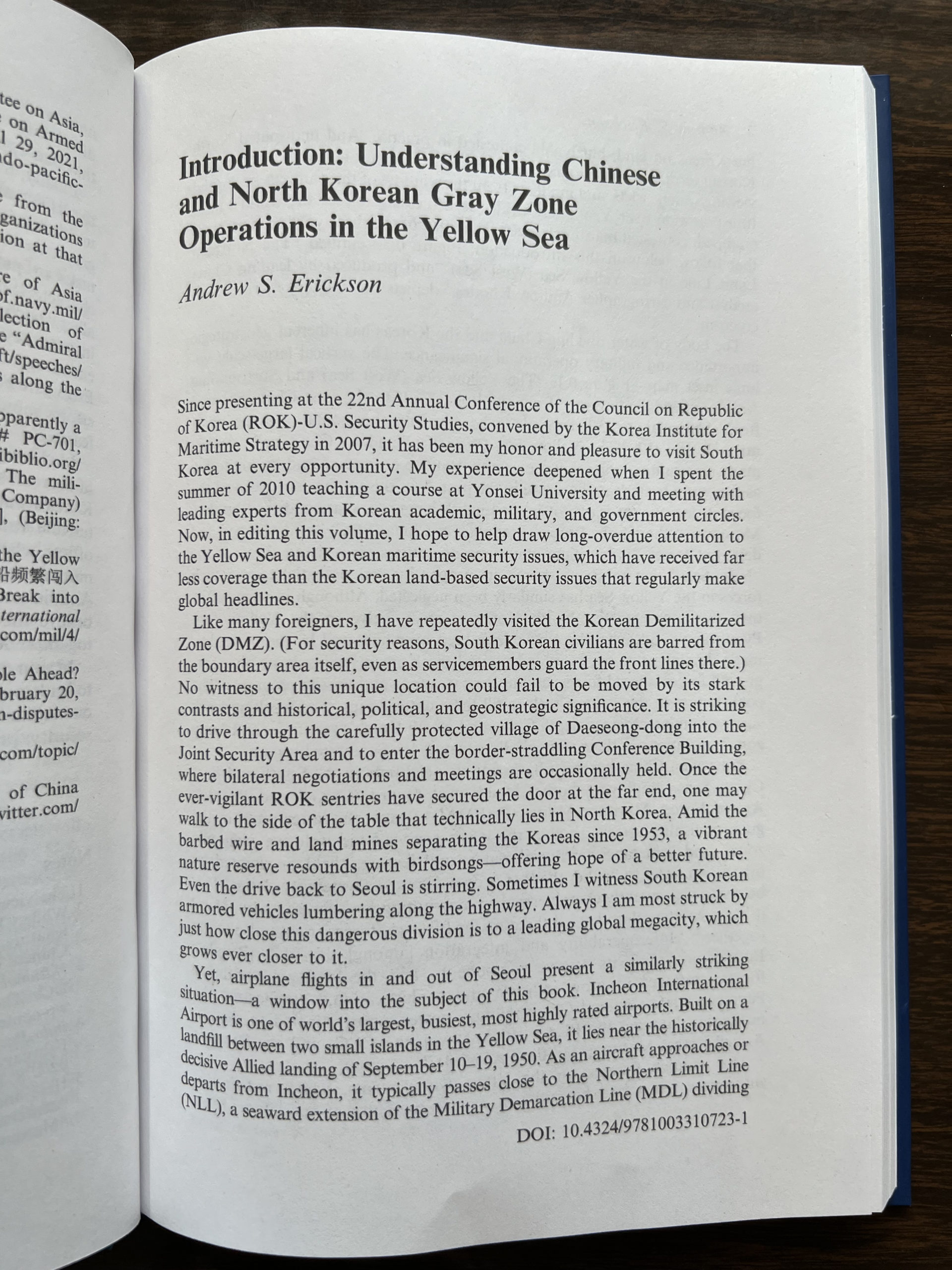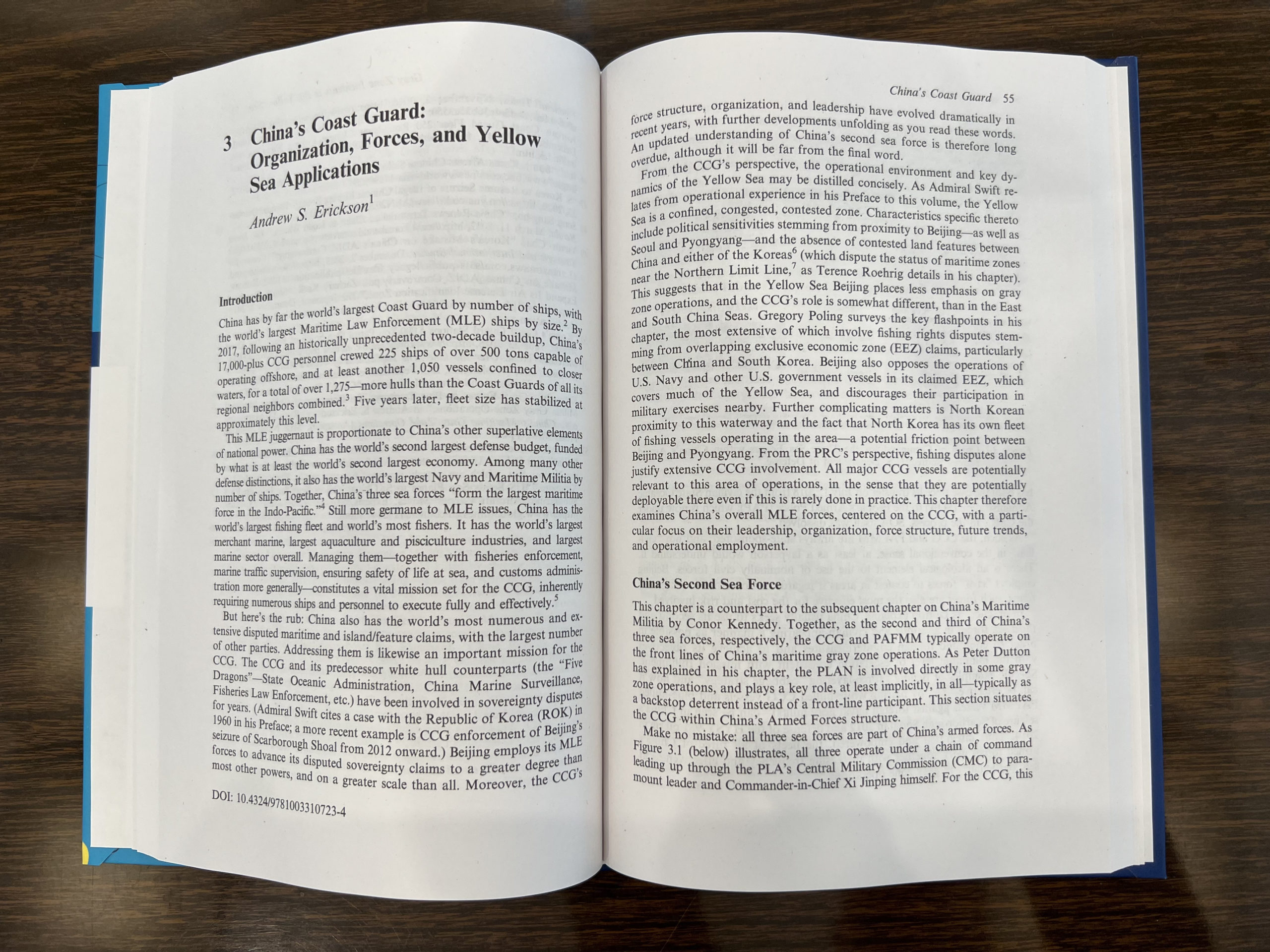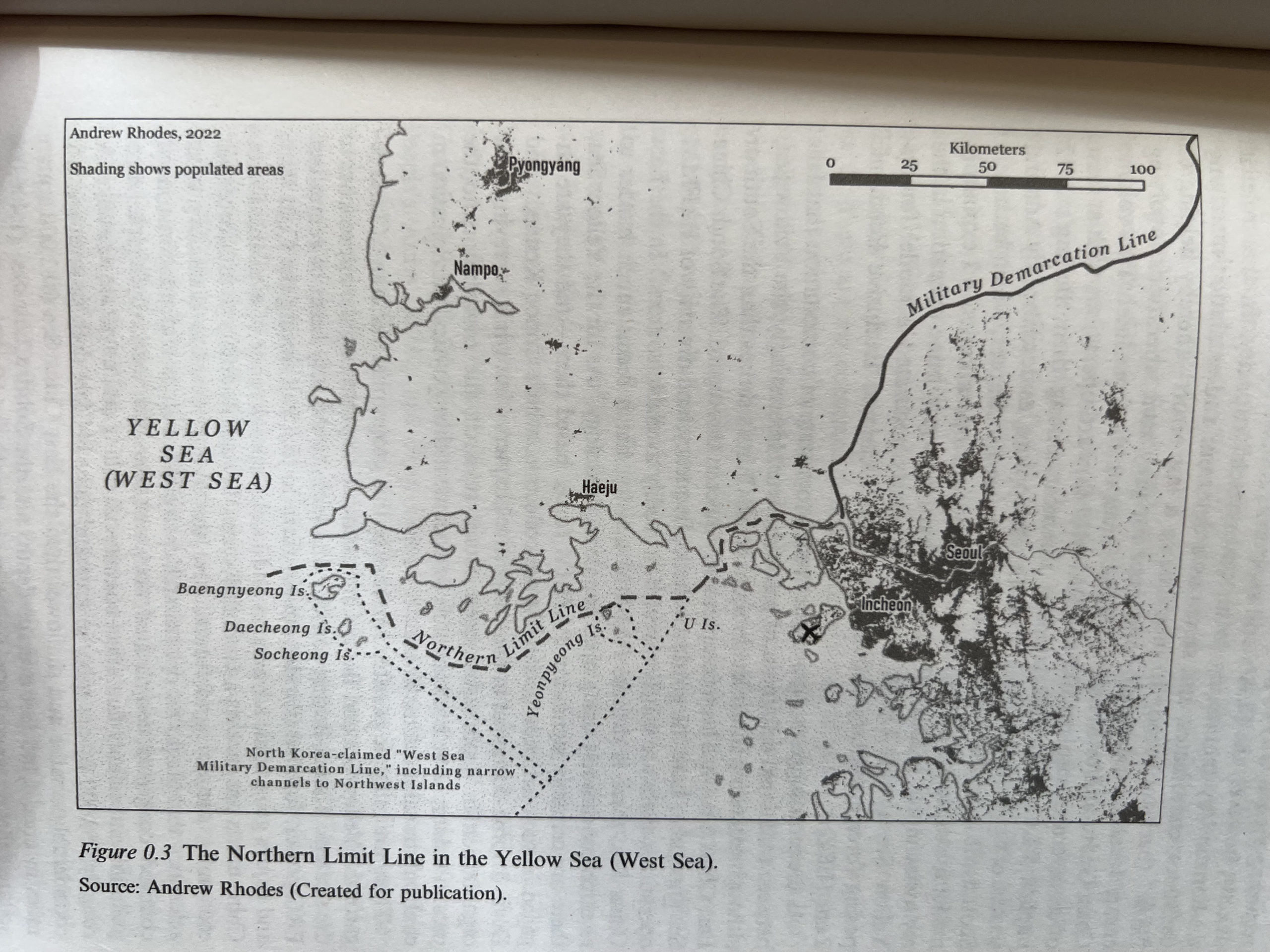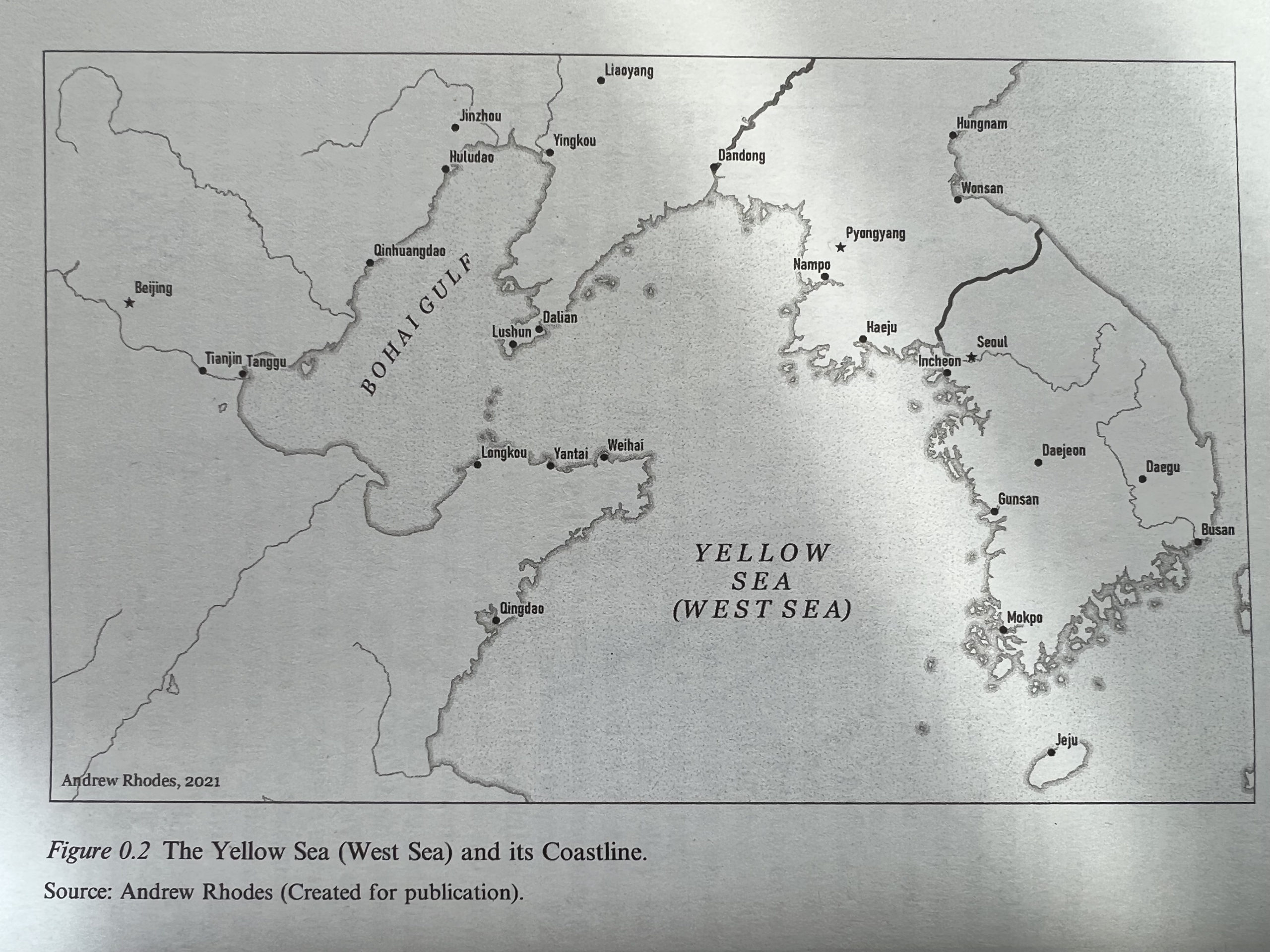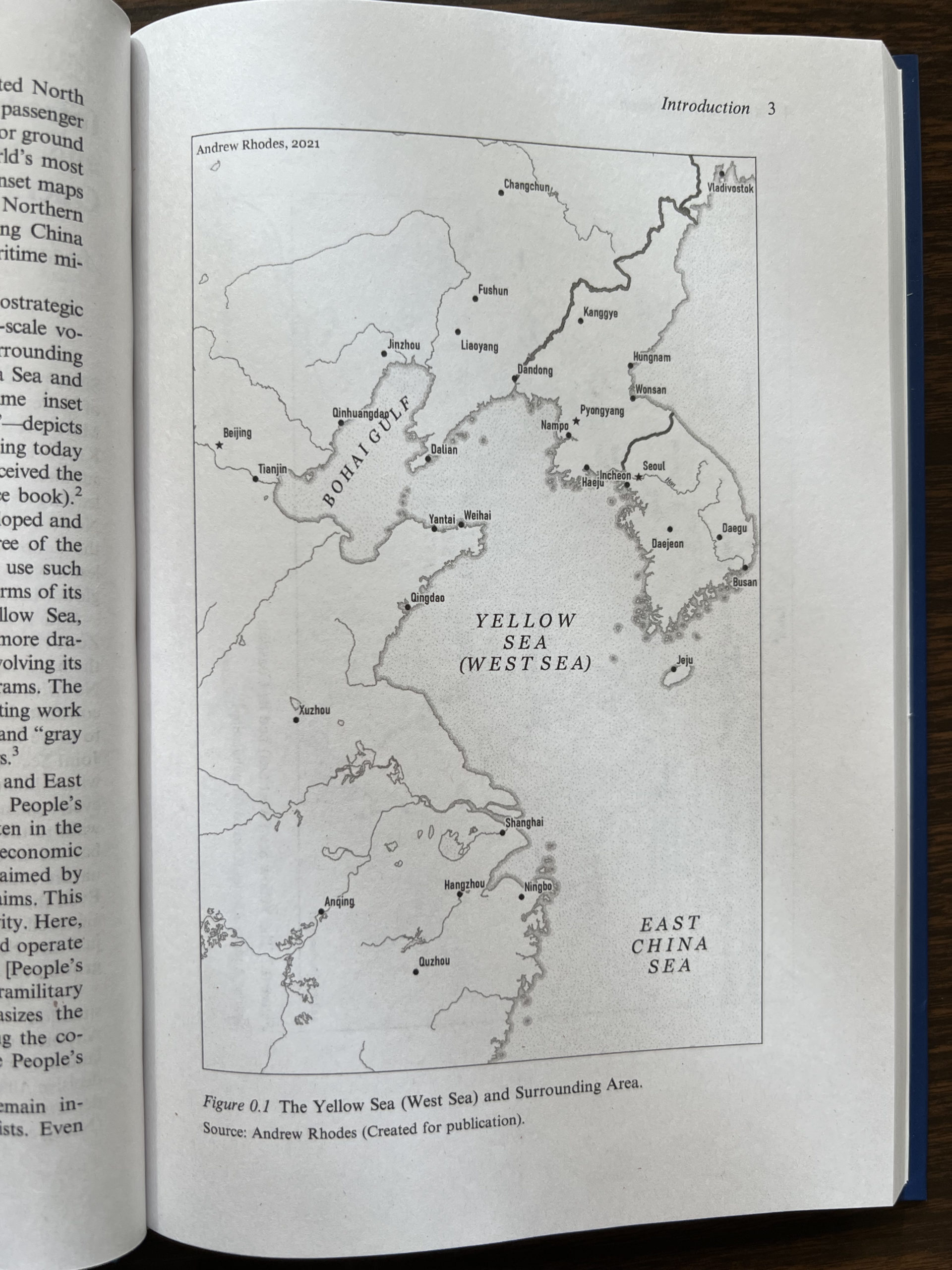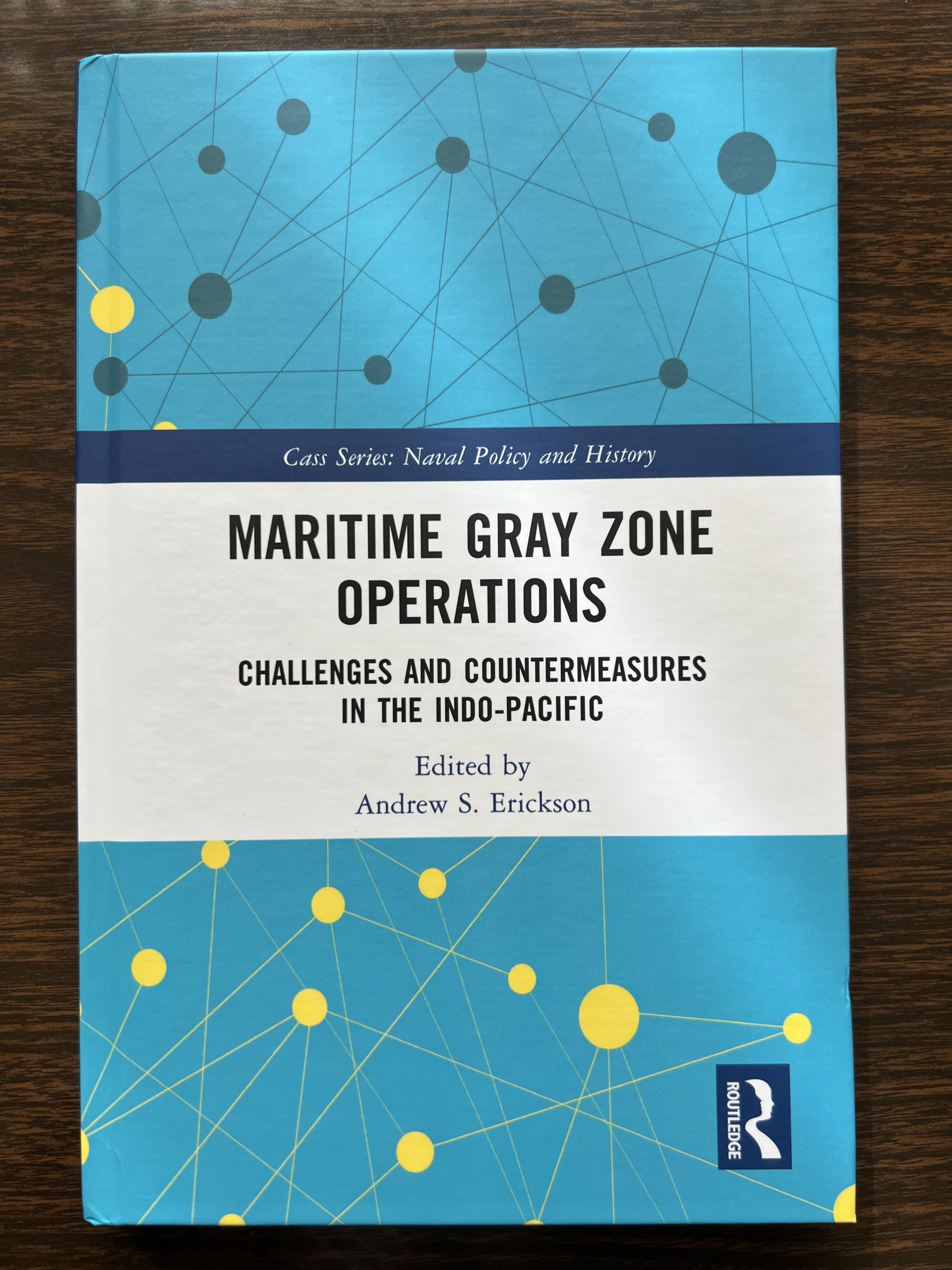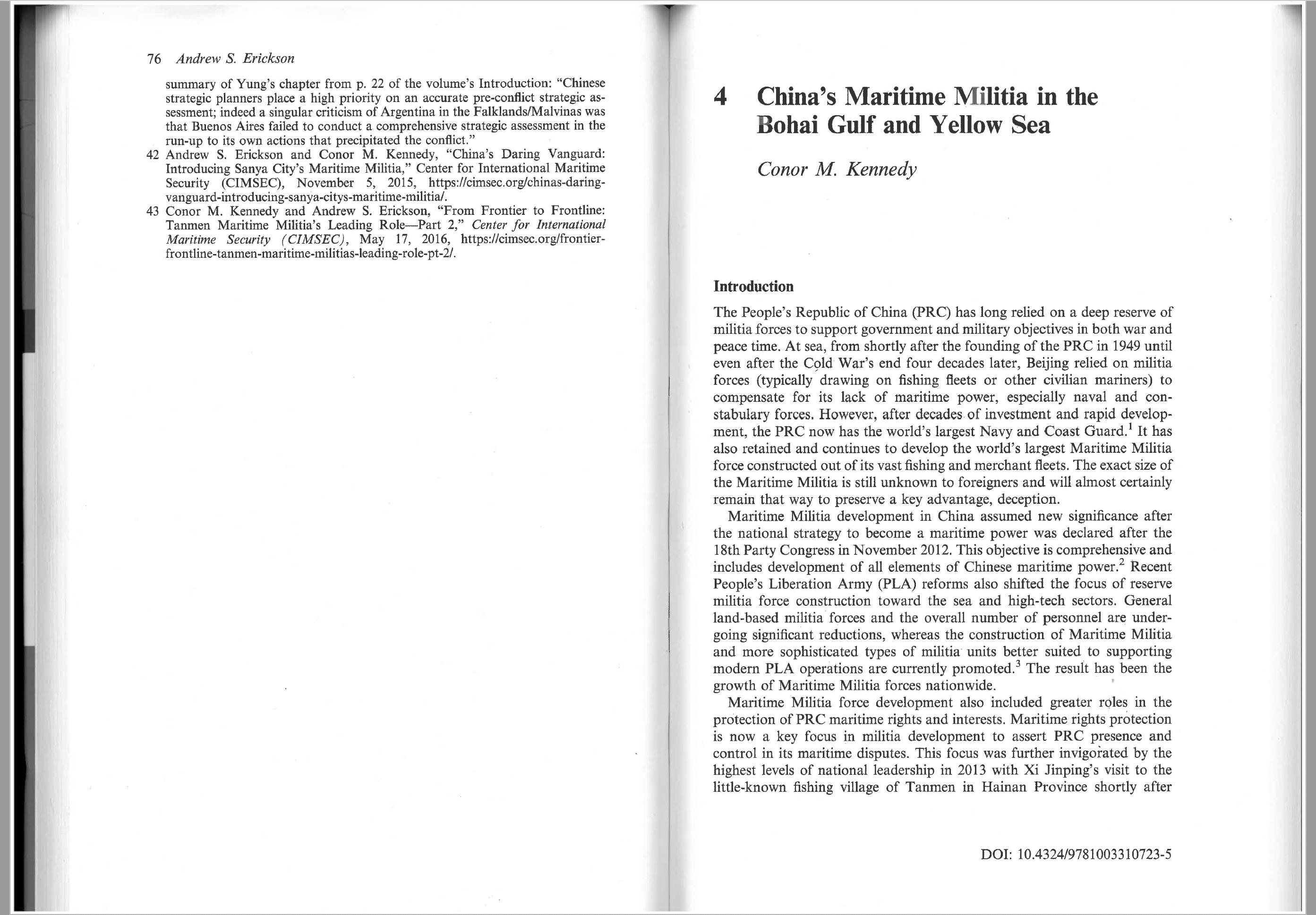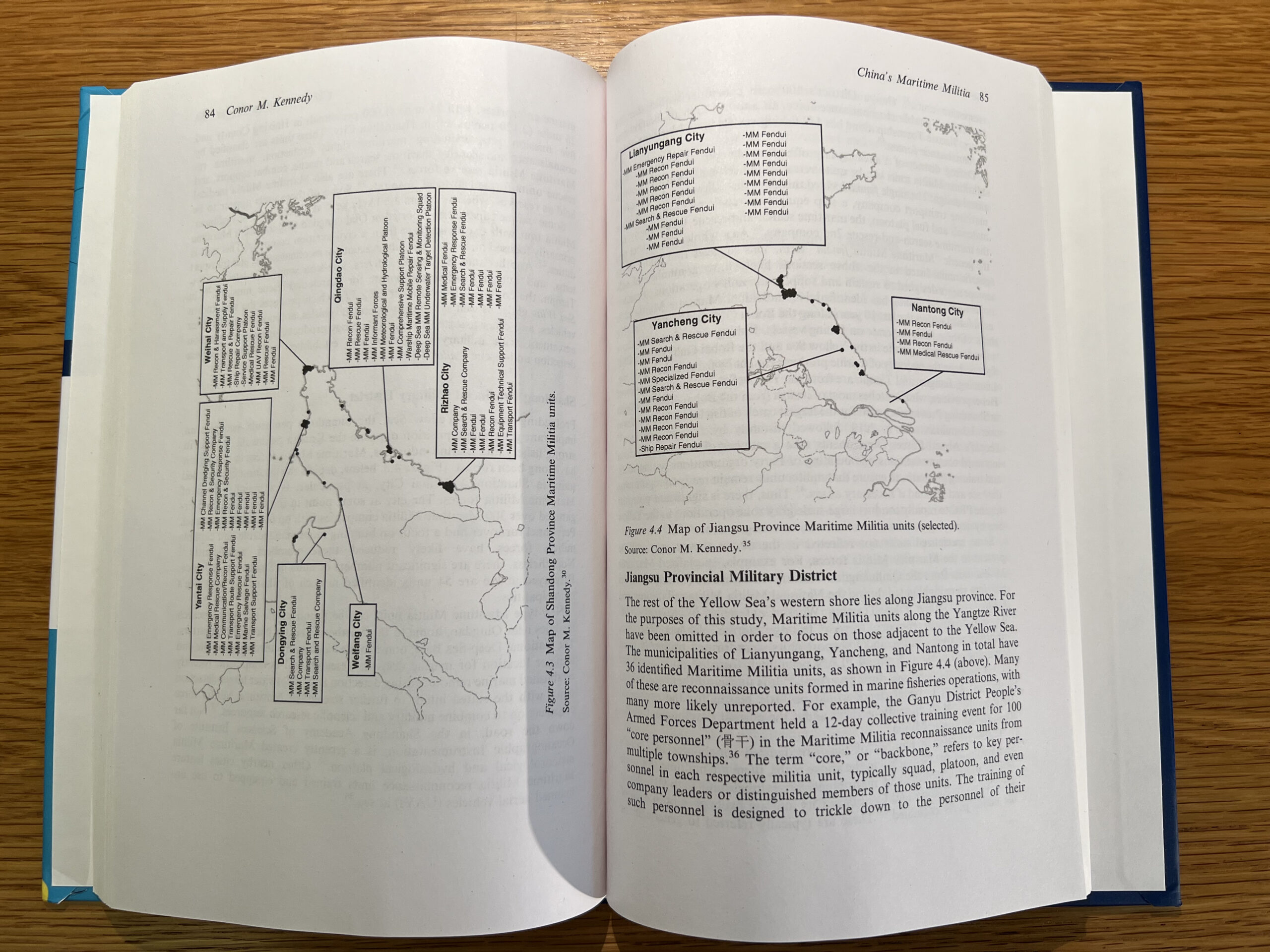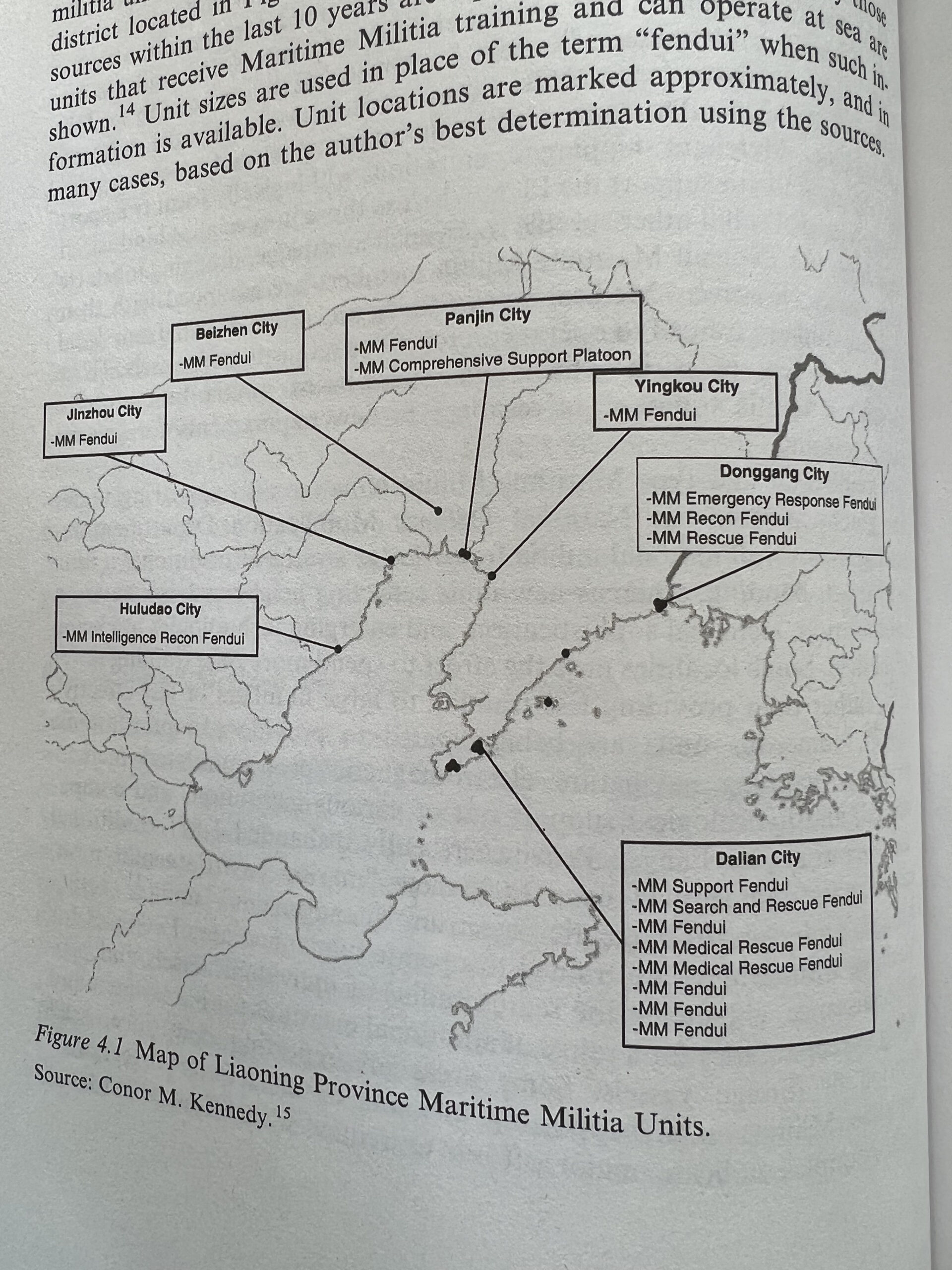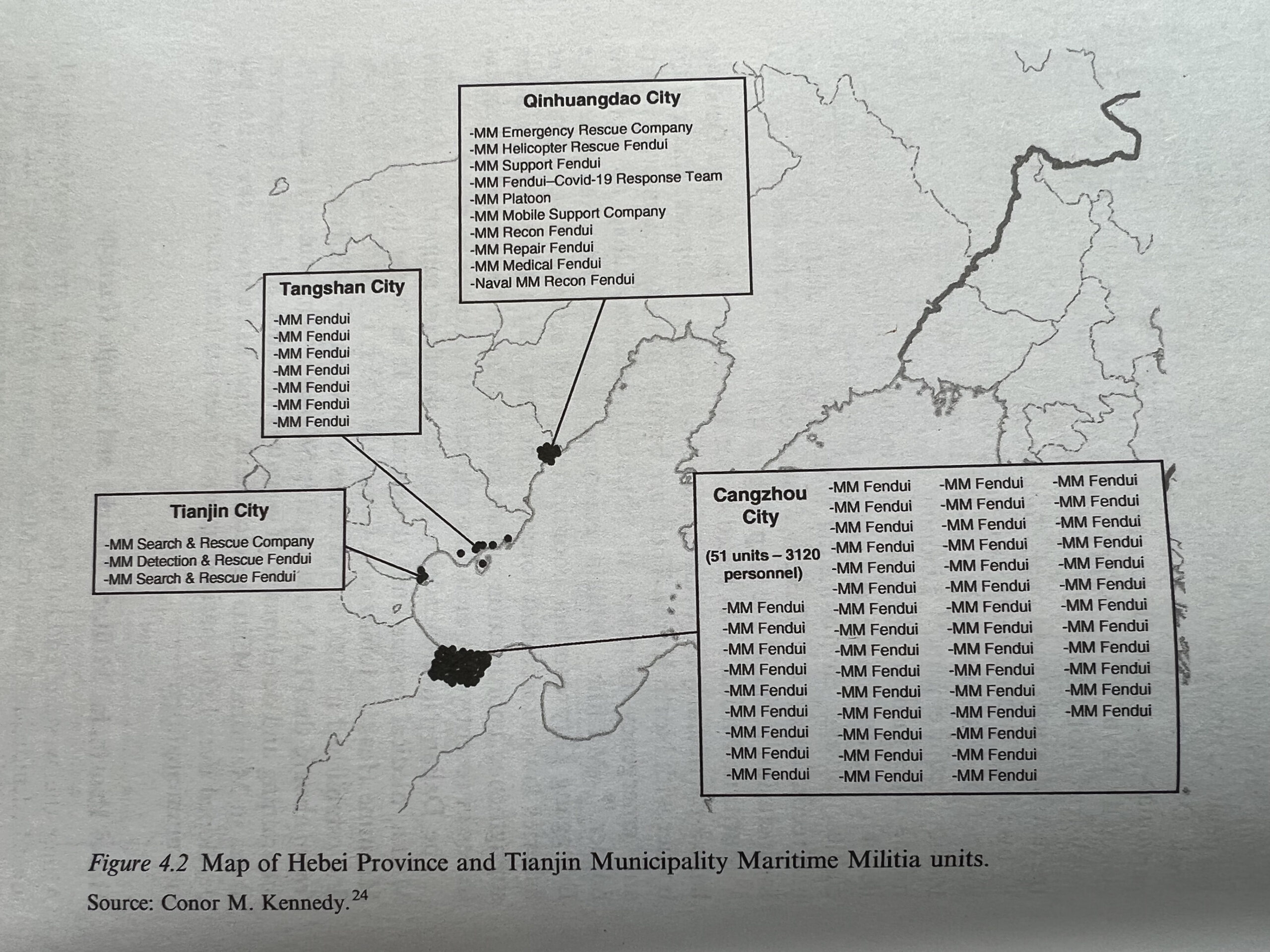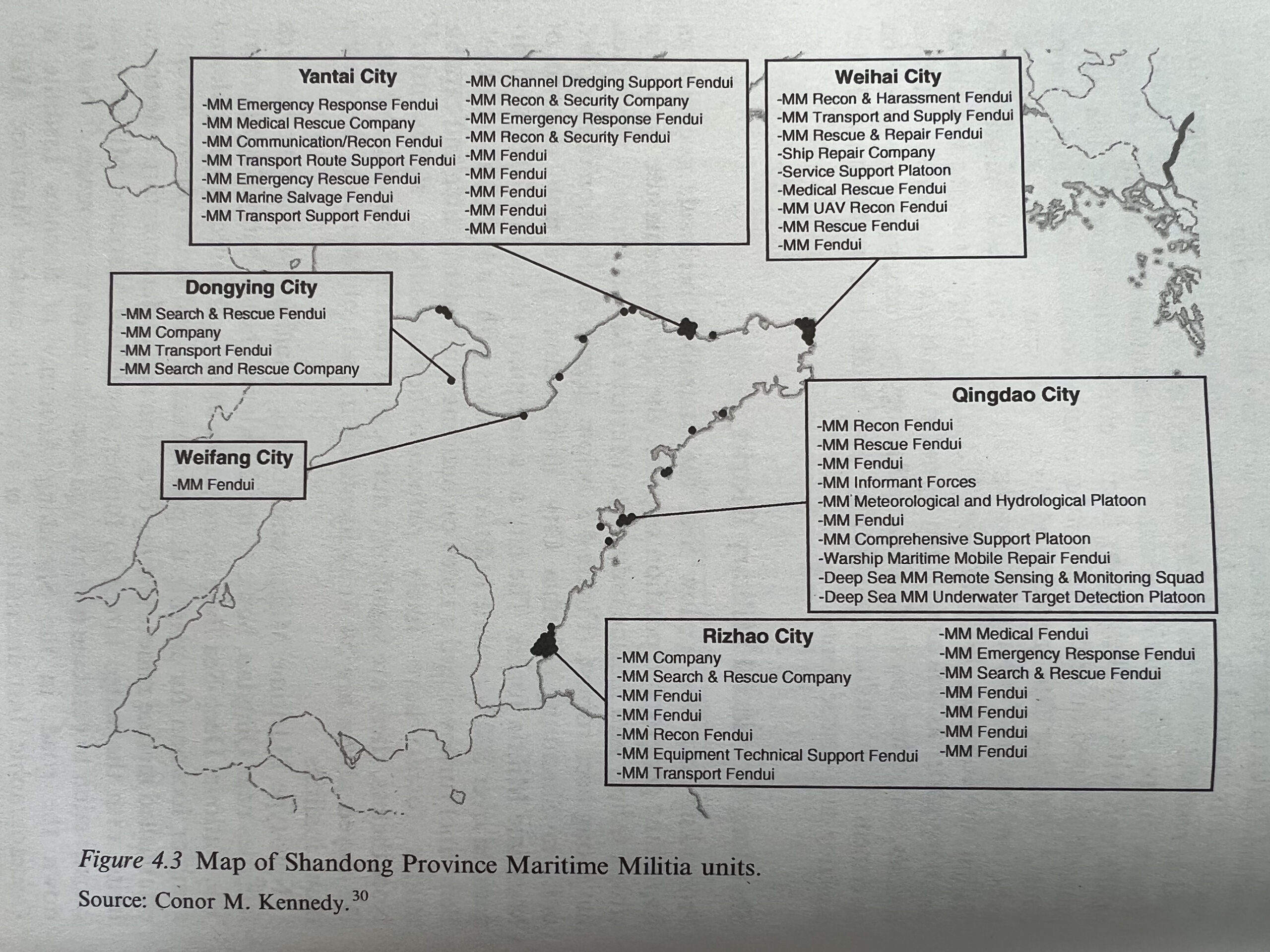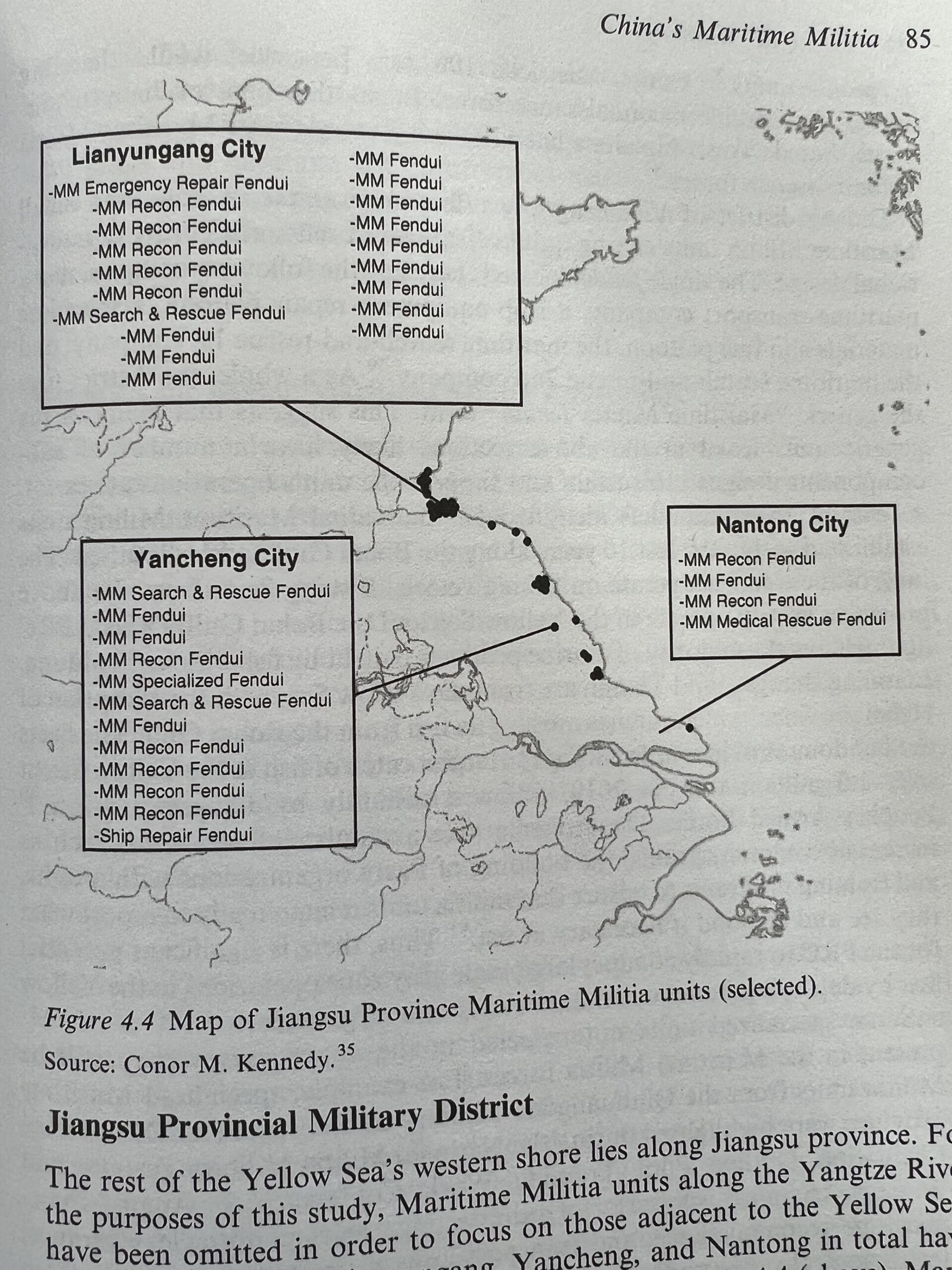20% Discount for Paperback Edition: “Maritime Gray Zone Operations: Challenges & Countermeasures in the Indo-Pacific”
CLICK HERE TO ACCESS A TWO-PAGE PDF OF THE FLYER.
China & North Korea’s Yellow Sea activities illuminated as nowhere else!
Check out the new paperback edition of our book, published in Naval War College Professor Geoffrey Till’s Routledge Cass Series on Naval Policy & History. Sponsored by the Korea Institute for Maritime Strategy (KIMS), it offers:
1) An authoritative Preface by former Commander, U.S. Pacific Fleet Admiral Scott Swift(USN, Ret.).
2) Cutting-edge chapters by Peter Dutton, Gregory Poling, Conor Kennedy, Devin Thorne, and Terence Roehrig.
3) Uniquely revealing maps by Andrew Rhodes—including of the Northern Limit Line, Pyongyang’s counterproposals thereto, the five nearby Northwest Islands under South Korean control.
Proud to work with these leading stakeholders and superstars! Peter offers the best gray zone conceptual framework I’ve yet seen. Greg offers a tour de force of comparative context vis-a-vis the South China Sea and East China Sea. Devin offers unparalleled insights on the evolution of specialized PAFMM forces and the extent of their operations in the Yellow Sea. Terry delivers a powerful history and current survey of North Korean strategy, policy, and actions in these strategically pivotal yet strangely understudied waters.
To see just how deep our new book dives in with original Chinese-language research, etc., see the graphics (& endnotes) in Conor’s chapter! He’s identified, geolocated, and analyzed Yellow Sea Maritime Militia units beyond anything else Open Source to the very best of my knowledge.
I’m honored to offer an Introduction and a chapter on the China’s Coast Guard. Hope this book helps increase attention to, and understanding of, all these vital issues…
The new paperback edition is Amazon’s #1 New Release in North Korean History:
Andrew S. Erickson, ed., Maritime Gray Zone Operations: Challenges and Countermeasures in the Indo-Pacific (New York, NY: Routledge Cass Series: Naval Policy & History, 2022/paperback 2024).
Author of:
- Andrew S. Erickson, “Introduction: Understanding Chinese and North Korean Gray Zone Operations in the Yellow Sea,” 1–18.
- Andrew S. Erickson, “China’s Coast Guard: Organization, Forces, and Yellow Sea Applications,” 54–76.
Book Description
This book addresses the issues raised by Chinese and North Korean maritime ‘gray zone’ activities in the Indo-Asia-Pacific region.
For years, China has been harassing its neighbors in South China Sea and East China Sea, employing both coast guard and maritime militia forces, in the name of safeguarding Chinese sovereignty. This behavior is frequently characterized as constituting ‘gray zone’ activity. As the term suggests, this refers to a state of conflict that falls between peace and war. Interestingly, the Yellow Sea, which is geographically much closer to China than South China Sea or East China Sea, has been comparatively quiet. However, there is a danger that the PRC has the capability to replicate its gray zone activities in this area. Worse, North Korea has also been engaging in carefully-calibrated provocations there. This book addresses pressing questions about these activities and offers: (1) a conceptual framework to understand maritime gray zone operations and Beijing and Pyongyang’s approach, with an unprecedented focus on the Yellow Sea; (2) a comprehensive, fully updated fleet force structure for the PRC’s Coast Guard, together with projections regarding how the Coast Guard is likely to develop in the future; (3) an extensive organizational analysis of the PRC’s Maritime Militia that surveys the many units relevant to Yellow Sea operations, some revealed publicly for the first time; and (4) a detailed assessment of North Korean maritime ‘gray zone’ activities.
This book will be of great interest to students of naval strategy, maritime security, Asian politics, and international security.
Table of Contents
Introduction: Understanding Chinese and North Korean Gray Zone Operations in the Yellow Sea
Andrew S. Erickson, U.S. Naval War College and Harvard University
1. Conceptualizing China’s Maritime Gray Zone Operations
Peter A. Dutton, U.S. Naval War College and MIT
2. Gray Zone Incidents in the Yellow Sea
Gregory B. Poling, Center for Strategic and International Studies
3. China’s Coast Guard: Organization, Forces, and Yellow Sea Applications
Andrew S. Erickson, U.S. Naval War College and Harvard University
4. China’s Maritime Militia in the Bohai Gulf and Yellow Sea
Conor M. Kennedy, U.S. Naval War College
5. Casting a Wider Net: The Activities and Evolution of China’s Maritime Militia in the Yellow Sea
Devin Thorne, Threat Intelligence Analyst, Recorded Future
6. North Korea: Gray Zone Actions in the Yellow Sea
Terence Roehrig, U.S. Naval War College and Columbia University
Editor
Biography
Andrew S. Erickson is Professor of Strategy at the Naval War College’s China Maritime Studies Institute, RI, USA and a Visiting Scholar in the Department of Government at Harvard University.
Conor M. Kennedy, “China’s Maritime Militia in the Bohai Gulf and Yellow Sea,” in Andrew S. Erickson, ed., Maritime Gray Zone Operations: Challenges and Countermeasures in the Indo-Pacific (New York, NY: Routledge Cass Series: Naval Policy & History, 2022), 77–99.
The People’s Republic of China (PRC) has long relied on a deep reserve of militia forces to support government and military objectives in both war and peace time. At sea, from shortly after the founding of the PRC in 1949 until even after the Cold War’s end four decades later, Beijing relied on militia forces (typically drawing on fishing fleets or other civilian mariners) to compensate for its lack of maritime power, especially naval and constabulary forces. However, after decades of investment and rapid development, the PRC now has the world’s largest Navy and Coast Guard.1 It has also retained and continues to develop the world’s largest Maritime Militia force constructed out of its vast fishing and merchant fleets. The exact size of the Maritime Militia is still unknown to foreigners and will almost certainly remain that way to preserve a key advantage, deception.
Maritime Militia development in China assumed new significance after the national strategy to become a maritime power was declared after the 18th Party Congress in November 2012. This objective is comprehensive and includes development of all elements of Chinese maritime power.2 Recent People’s Liberation Army (PLA) reforms also shifted the focus of reserve militia force construction toward the sea and high-tech sectors. General land-based militia forces and the overall number of personnel are undergoing significant reductions, whereas the construction of Maritime Militia and more sophisticated types of militia units better suited to supporting modern PLA operations are currently promoted.3 The result has been the growth of Maritime Militia forces nationwide.
Maritime Militia force development also included greater roles in the protection of PRC maritime rights and interests. Maritime rights protection is now a key focus in militia development to assert PRC presence and control in its maritime disputes. This focus was further invigorated by the highest levels of national leadership in 2013 with Xi Jinping’s visit to the little-known fishing village of Tanmen in Hainan Province shortly after coming to power.4 Xi’s visit on the first anniversary of China’s capture of Scarborough Reef from the Philippines in 2012, with the help of the village’s Maritime Militia, made it clear that the Maritime Militia will continue to be a key component in protecting maritime rights and interests. Xi is reported to have issued multiple directives on maritime rights protection and Maritime Militia construction since he assumed power.5 This demonstrates strong recognition of the success these forces had in protecting and advancing PRC claims without sparking a regional conflict.
The militia has a prominent role in protecting maritime rights and interests in the South China Sea due to sovereignty and territorial disputes between China and other regional claimants. Numerous operations and achievements by Maritime Militia forces in the South China Sea have been well-documented and acknowledged by international observers.6 Maritime Militia forces in the Bohai Gulf and Yellow Sea receive significantly less attention. However, Maritime Militia force development in this region appears to be equally as robust as in the rest of China’s coastal provinces. As a key responsibility of PLA provincial military districts, militia construction in northern coastal provinces has also shifted focus toward the sea.
This chapter provides a comprehensive review of Maritime Militia forces that could be mobilized in the Yellow Sea, how they are organized, and how the PLA envisions their use. The decentralized nature of militia development nationwide provides abundant authoritative open sources that elucidate this still insufficiently studied force. Surveying sources from various local governments, media news services, and PLA writings reveals the scale, organization, and development of Maritime Militia forces in Chinese provinces along the Bohai Gulf and Yellow Sea. Details on specific units, training, and other factors also demonstrate what capabilities may be available when mobilized, and can establish a baseline of Maritime Militia forces that commanders may draw upon in a gray zone scenario. This will be crucial to gauge potential responses by China in gray zone disputes in the region. … … …
***




